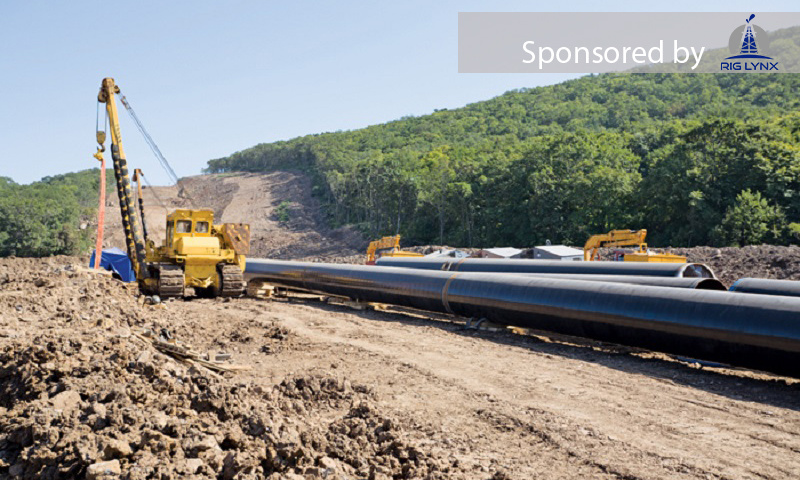
The pipeline crunch threatening the world’s hottest shale play won’t be solved until at least the back half of next year. But then, the floodgates will open.
Pipelines serving the Permian Basin in Texas and New Mexico were able to carry 2.9 million barrels of oil a day in the second quarter, according to analysts at Bloomberg NEF, and pretty much every line from Midland to the Gulf Coast is full. That’ll change in late 2019 as three major projects are slated to open, potentially adding more than 2 million barrels a day of capacity.
Fixing the pipeline conundrum is key for a shale play where researcher IHS Markit expects output to more than double by 2023 to 5.4 million barrels a day, eclipsing every OPEC nation beyond Saudi Arabia. Pipeline builders are pouring billions of dollars into the basin, but delays are a concern as developers compete for everything from labor to steel.
“They want to move heaven and Earth to get these projects done,†said John Kilduff, a partner at New York-based hedge fund Again Capital LLC. “In a situation like this, the economics just make it so compelling that they rush resources into the area, and that’s what you’re seeing.â€
Growing Pains
Permian will produce almost 1 million barrels a day more than its pipes can handle in 2019
The bottlenecks are reverberating through global energy markets. Combined with disruptions in Iran, Venezuela, Libya and Canada, stranded oil in the Permian has helped push up benchmark U.S. crude prices by roughly 20 percent this year. With gasoline also rising and congressional elections looming in November, President Donald Trump took to Twitter last week demanding OPEC lower prices.
In the meantime, producers are moving cautiously, with the number of wells left deliberately uncompleted on the rise. Permian wells that were drilled but not taken through the final stage of hydraulic fracturing surged to 3,203 in May, a 90 percent increase from a year earlier and the highest since the Energy Department began tracking in 2013.
Pipeline woes are moving some companies to rethink their strategy. ConocoPhillips Chief Executive Officer Ryan Lance told Bloomberg TV last month that the world’s biggest independent oil explorer will likely move some rigs from the Permian to the less crowded Eagle Ford shale in South Texas to avoid the constraints. “Why would I drill into that headwind if I can reallocate that capital somewhere else?†Lance said.
The shortage has forced some producers to sell locally at a steep discount to Gulf Coast prices, or to pay extra to ship barrels hundreds of miles by truck or rail. Crude sold in Midland, in the heart of the Permian, for $15.35 a barrel less than in Houston on Monday, after starting the year at a $4 discount.
That makes the new proposals critical to the U.S. shale boom’s future.
The projects include Plains All American Pipeline LP’s Cactus II, running from Midland to Corpus Christi on the Gulf Coast and slated to carry as much as 670,000 barrels a day. Also expected in late 2019 are Phillips 66 Partners’ and Andeavor’s Gray Oak pipeline, proposed for 700,000 to 1 million barrels, and the private equity-backed EPIC pipeline, which could carry as much as 675,000 barrels. (continued on page 2)
Check out our other current stories, we dare you…
- $50 Billion in mergers coming to the Permian
- 75% increase in LNG carrier newbuilds!
- Chinese company stops import of US crude?
<
Substantial Relief
They’ll offer “substantial relief†to producers eager to drill without fear of having nowhere to put their supply, Kilduff said.
Others are trying to make existing infrastructure go further: Plains, Energy Transfer Partners LP and Magellan Midstream Partners LP are all expanding existing crude pipes. That’s expected to add 400,000 barrels a day of capacity by the middle of next year.
Other projects are farther off, including plans for two giant pipelines that could take 1 million barrels of oil each. Energy Transfer is proposing one from the Permian to Nederland, Texas, and Exxon Mobil Corp. is teaming up with Plains for another to Corpus Christi. Those projects wouldn’t enter service until 2020 or 2021.
Permian Crude PipelinesÂ
That’s already sparking talk of a potential overbuild, including from Magellan Chief Executive Officer Mike Mears. He’s advocated shippers extend contracts on existing lines — like his Longhorn pipeline — instead of signing onto new projects.
“You may have a nicely contracted pipeline for five years, but what does your sixth look like if your competitors build too many pipelines?†Mears said last month at an investor conference. “You always want to be cautious of not overbuilding.â€
But complications could also arise. Plains last month bumped back the start date for Cactus II — from the third quarter of 2019 to October — citing unidentified “constraints.â€
“If it’s delayed again, producers could be looking at a difficult 2019,†Guggenheim Securities analyst Matthew Phillips said.
Pipeline Timelines
Plains may not be the only one facing pressure. The chances for setbacks are “increasing by the day,†said Robert W Baird & Co. analyst Ethan Bellamy.
“If you’re starting to build three or four of these pipelines out of the Permian at the same time, there’s a potential to max out the available construction capacity,†he said. “If there are delays, they’re probably due to construction capacity and labor and acquisition of pipeline in a timely and cost-efficient manner.â€
Still, by early 2020, drillers may have more ability to move oil out of the Permian than they really need, said John Zanner, an RBN Energy analyst. While good for producers that benefit from cheaper shipping, that also could force companies to scrap some plans, he said.
Others say the play is up to the challenge.
“They’re finding more and more oil every day,†said Again Capital’s Kilduff. “The good old days are back, and you’re going to see all of these be put into action.â€
Check out our other current stories, we dare you…



